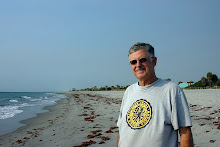 |
| From OVERSTAMPS |
Here is one of the Cuban over stamped Spanish reales.
Click on the coin photo to view the other over stamped coins. Use your back button to return here.
Navigate to: "The meaning of the over stamps" to find the answer.
Salvage, conservation history and additional in situ artifacts located at the Fort Lauderdale Sunrise wreck 1956 – 1957 Fort Lauderdale Sunrise wreck salvage history. The initial cultural deposit was discovered by Charles & John Noyes in 1956 while collecting tropical fish.
 |
| From OVERSTAMPS |
Here is one of the Cuban over stamped Spanish reales.
Click on the coin photo to view the other over stamped coins. Use your back button to return here.
Navigate to: "The meaning of the over stamps" to find the answer.
Marvin Grim, 15, found the coins and brought them to the Chamber of Commerce, August Burghard, Chamber secretary, said. The coins, when found, were stuck together by some kind of corrosion, indicating that they may have been in a container at one time. They all bore legible Spanish writing and the dates were readable. Some of the dates were 7775, 1779 and 1801."
This 1935 news article was discovered in the summer of 2007 by the staff of the Broward County Historical Commission. Young Mr. Grimm was probably just as excited to find his coins as we were in 1956 when we made our finds. Again, the coin dates coincide well with the other coins found associated with this wreck.
The fact that Marvin's coins were found on the beach leads me to suggest that the hull, or fragments of it, and iron structures are located near where the coins were found.
A search of the 1935 hurricanes leads one to suspect that the 1935 Yankee hurricane uncovered the cluster of coins for Marvin to find. That hurricane came south from off shore of the Carolina's making landfall near Miami Beach as a category 2 hurricane on November 4th Marvin found the coin clump on the morning of November 5.
This was also the year of the Labor Day Hurricane that was a small intense hurricane which came ashore in the Upper Keys on September 2Nd as a category 5. That storm probably caused substantial beach erosion of Fort Lauderdale beaches, helping to uncover Marvin's find.
